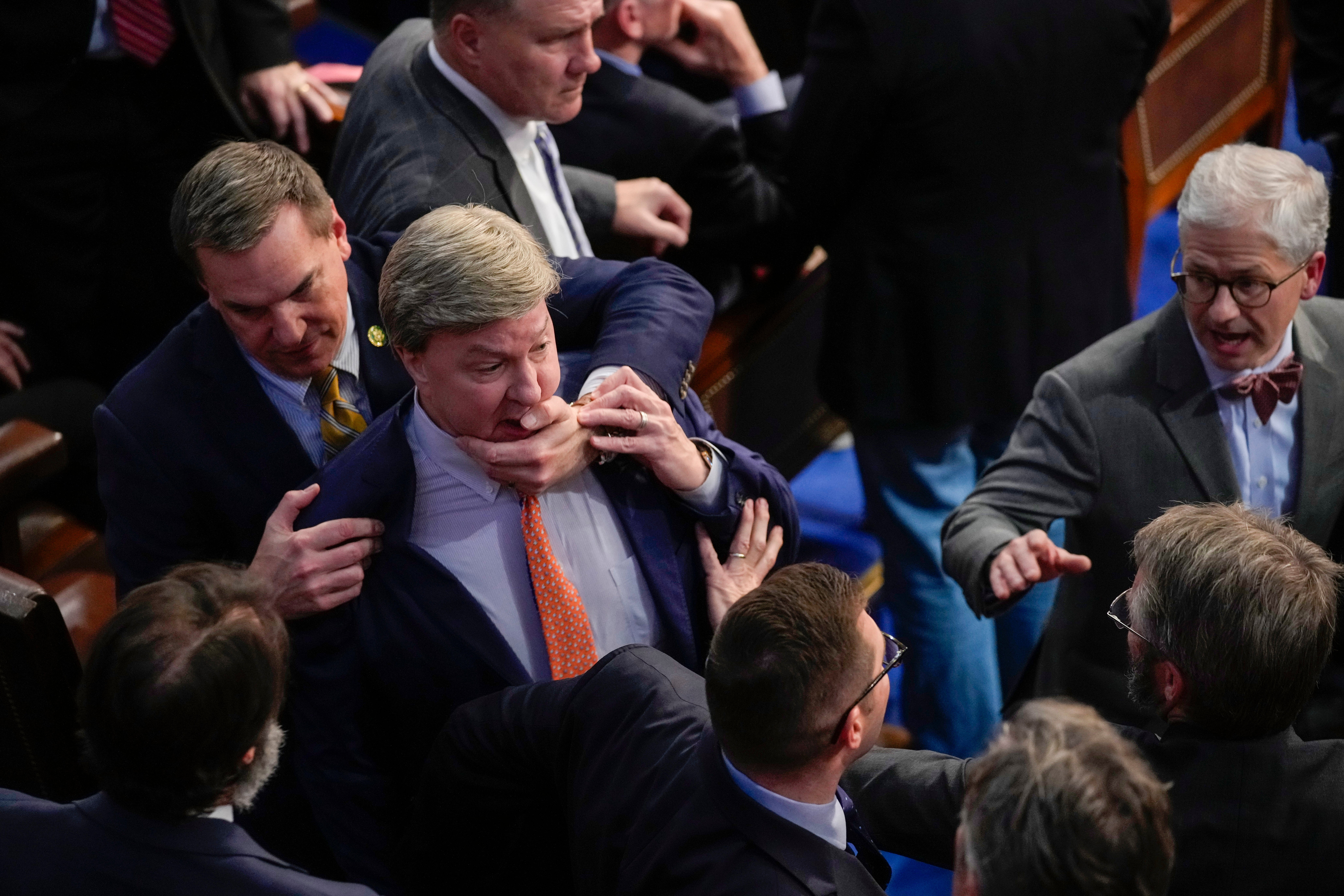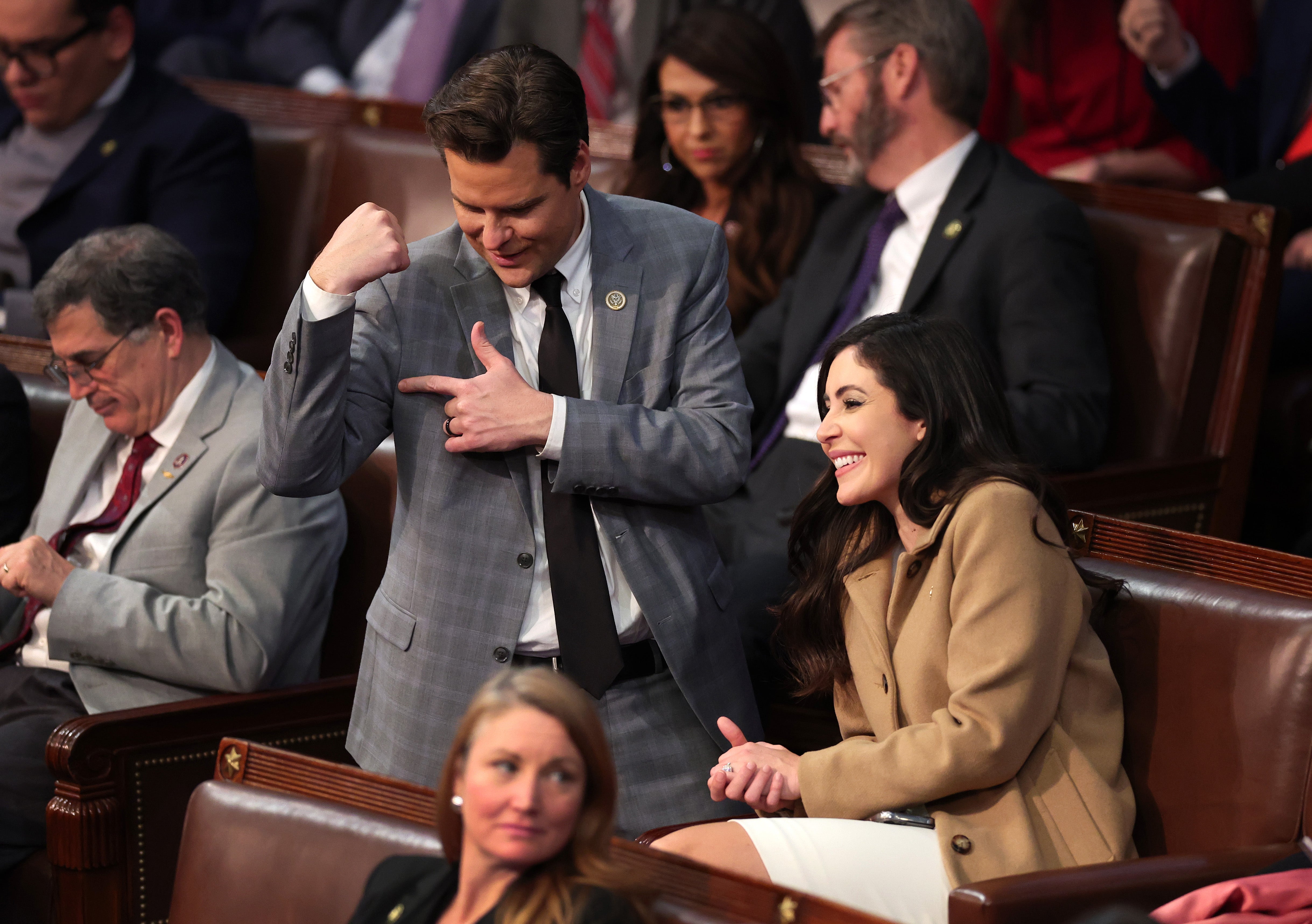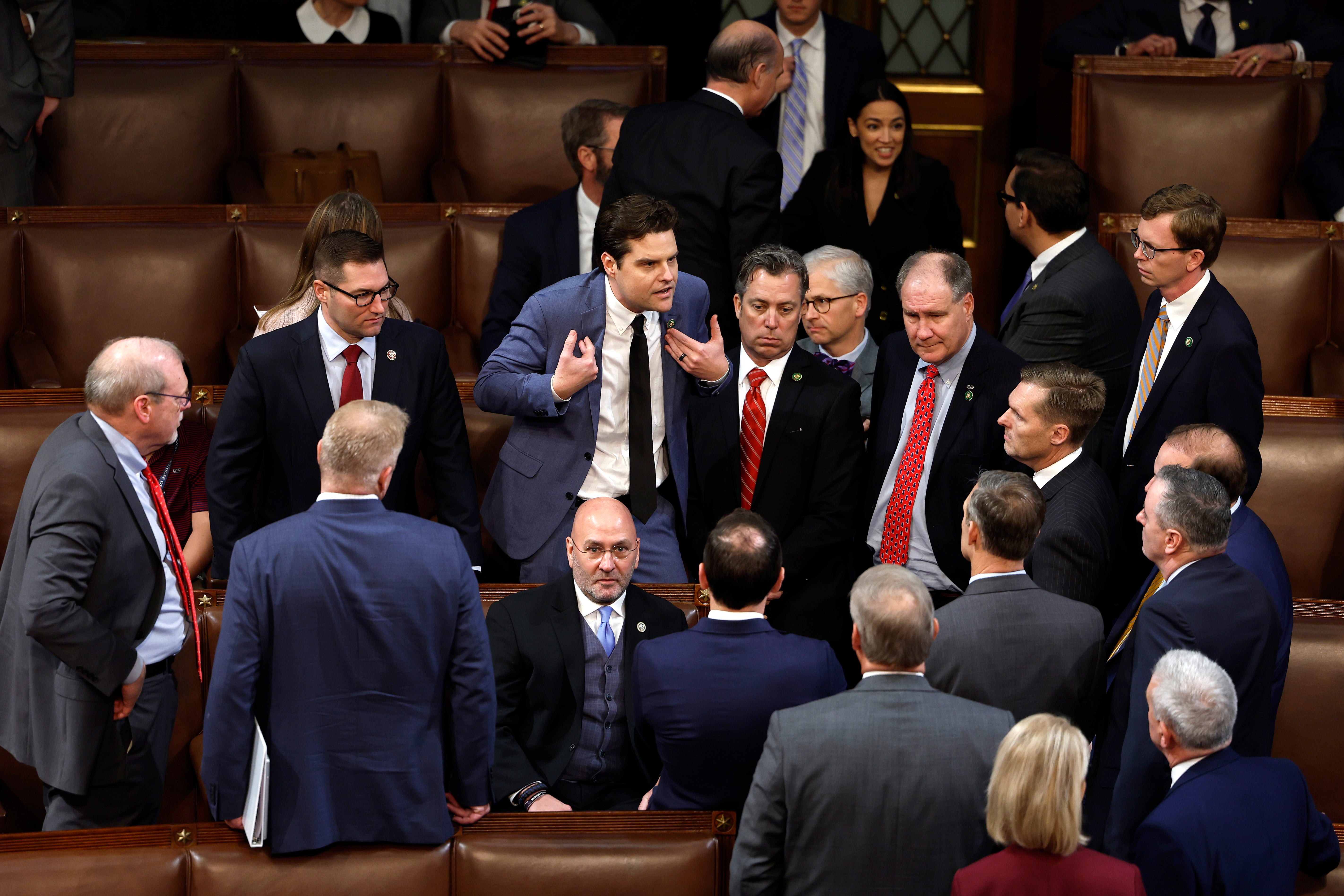
Just after midnight on Saturday, Kevin McCarthy was finally elected speaker of the House by his Republican colleagues, after an astounding 14 previous unsuccessful rounds of voting. The incident not only put a spotlight on the division and dysfunction within the GOP.
It also, after numerous, drawn-out, dramatic votes, highlighted how rare it is for the public to actually watch the work of Congress live, inspiring calls to give C-SPAN more control over its cameras inside the House.
As the House struggled to get its normal business underway, cameras from C-SPAN, the nonprofit public affairs network backed by large cable companies, caught all kinds of notable scenes.
In one instance, commentators noted a surprisingly cordial-looking exchange between Alexandria Ocasio-Cortez and Paul Gosar, an Arizona Republican who once posted a violent, anime-style parody video showing him killing the New York representative.
Another C-SPAN clip caught a conversation between Mr McCarthy and Matt Gaetz, one of the chief opponents to his speaker bid, that was so tense the bystanders nearly got into a fist fight.
The chaos in the House was directly related to C-SPAN’s extra freedom in filming it.
Established rules and decisions from the majority party determine what sort of shots C-SPAN will have access access to film, often resulting in cameras only being turned on for dry vote counts, instead of the behind-the-scenes horse trading that actually powers Washington politics.
“Because we have cameras in the chamber, we’re able to tell the story of what’s happening on the House floor,” Ben O’Connell, director of editorial operations at C-SPAN, told VICE News. “You’re able to see the migrating scrums of Congressmen on the House floor as they negotiate with each other. You’re able to see extraordinary conversations… And you’re able to see conversations that sometimes look somewhat contentious among some members. You’d never be able to see that with the standard House feed.”


The extra access has inspired calls to let C-SPAN have more editorial independence in covering Congress.
“The benefits of more openness are apparent this week in the House: Elected representatives earning a taxpayer-funded salary should be doing their business in as open a manner as possible,” Joe Lancaster argued in an article for Reason. “That not only includes their public speeches but what they do when they’re not speaking into a microphone.”
Control over the cameras has long been a source of controversy.

As they were introduced in Congress in the 1980s, legislators like Republican Newt Gingrich often gave grandstanding speeches meant for a TV audience.
In response, in 1984 then-House Speaker Tip O’Neill ordered the cameras to show Mr Gingrich was speaking to a largely empty chamber and made a number of remarks about the GOP firebrand, leading Mr O’Neill’s words to face the rare penalty of being stricken from the record.
The incident ultimately helped catapult Mr Gingrich to greater political fame and ultimately the Speaker’s seat himself.







